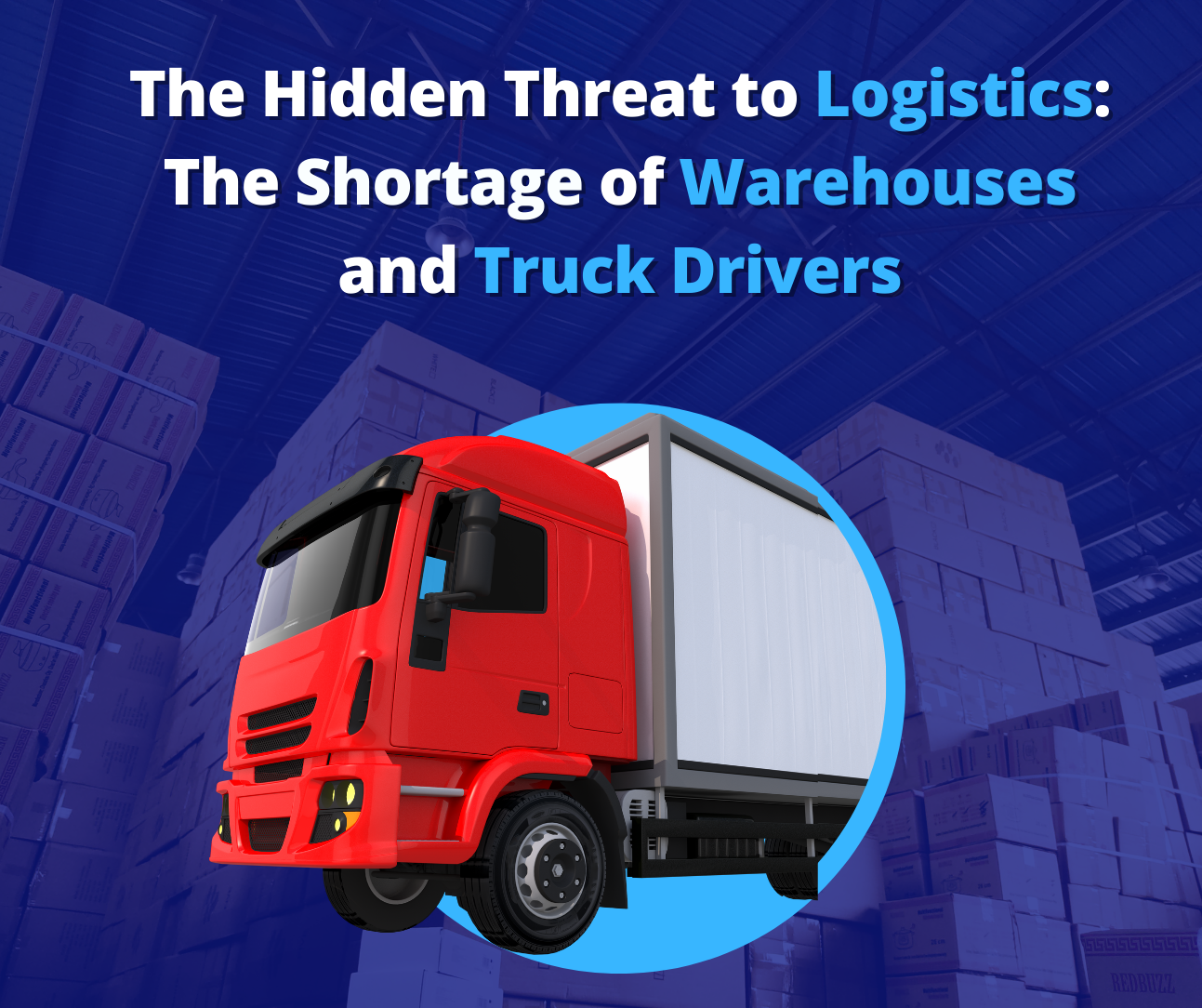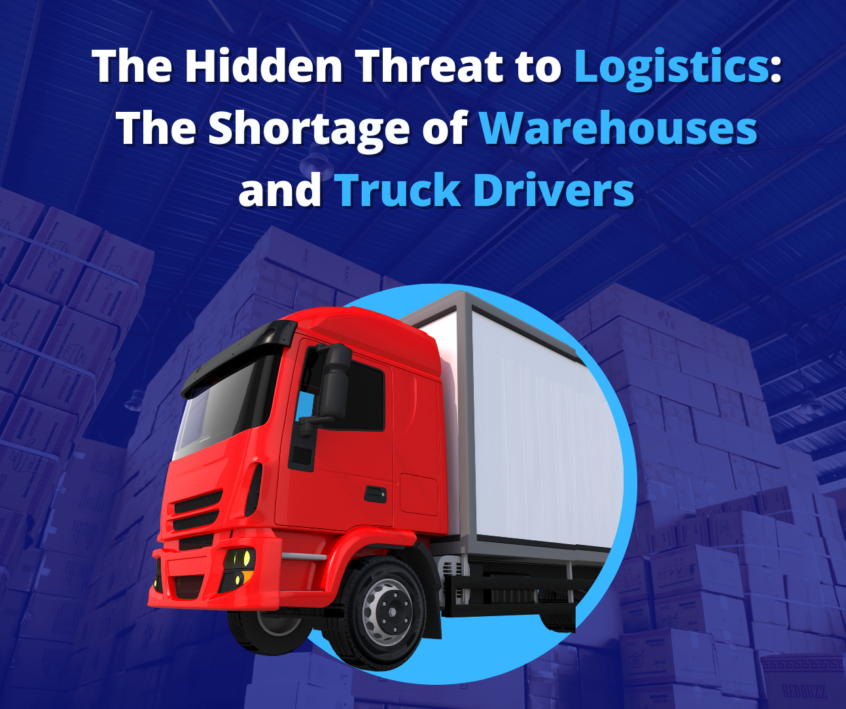
The implication for the industry and individual businesses
Container rates have started normalizing, but a lack of truck drivers and warehouses creates difficulties for the industry. Darin Miller (Manager, Sedgwick National Marine) anticipates these circumstances might extend the cost crisis longer than expected. Sedgwick is a global provider of integrated business solutions and employs up to 30,000 people in this field. Miller is a notable Marine expert whose other experts have echoed sentiments.
A warehouse shortage emerges
Just 12 months ago, the logistics industry was complaining about a container shortage crisis. However, that eventually turned into a shortage of warehouses. When goods are hitting ports, there is nowhere for them to go. The alternative is to leave the merchandise in its containers, which clogs the terminal and creates even more logistics challenges.
Historically, haulers had certain allowances regarding free days before picking up a container. This would then be moved to a third-party warehouse and unloading it. The container would then return for drop-off at the port. The situation has changed. Currently, containers not moved in time are penalized in addition to the standard demurrage charges. Demurrage comprises a charge payable to the owner of a chartered ship if there is a failure to load or discharge the ship within the allotted time.
e-Commerce affects warehouse space
Notably, production is picking up. Indeed, vendors and manufacturers are shipping again after the Covid-19 lull. However, the overall demand for goods is not as high as anticipated. Some experts argue that this is the consequence of the easing of restrictions that had been imposed during the pandemic. Consumers stopped spending on products and shifted their disposable income toward experiences, tourism, and services. Additionally, those products still being ordered are primarily going through e-Commerce.
Home deliveries are complicated in logistics. For instance, they take their toll on driver capacity. This has led to a shortage of truck drivers. Many experts argue that the shortage of drivers is at the root of many logistical challenges. The freight industry has always contended with this problem. The USA alone estimates that about 63,000 additional truck drivers would be needed to deliver current demands. The failure to meet this demand could lead to hold-ups and inflation. This could couple with unmet delivery timescales, which deteriorate customer experiences.
Looking for the right workers
Top TL executives have reported challenges in recruiting drivers. However, some say there has been some reduction in the crisis. For many decades, there has been a shortage of truck drivers. The American Trucking Associations have reported shortages of up to 80,000 vacancies. The problem has been tackled through pay increments in the hope that it could lead to better recruitment and retention statistics. However, these interventions notwithstanding, the market remains tough.
Derek Leathers (CEO Werner) suggested that businesses still had high expectations of getting good workers. The downside is that the market is so competitive that employers must be prepared to pay a premium to attract the best workers. At the same time, it is imperative to maintain very high driver standards, not least because of health and safety concerns. The year 2022 showed a year-on-year increase in driver pay. Werner is the 6th largest carrier in the USA, with an annual revenue portfolio worth $2.4 billion. This represents an increase of 18.4% when compared to 2021.
Companies like Werner are dealing with increments in driver costs. Without solid paychecks, it is virtually impossible to retain premium workers. Workers with stability and continuity are likelier to remain with a company than those who lead uncertain work lives. Driver costs at Werner increased by 15% during the first quarter of 2022. The same increment was reported in the second quarter before slightly tapering off by 9% and 4% in the 3rd and 4th quarter respectively. Leathers anticipates that in 2023 the cost increments will remain in the low single digits—a modest improvement from the height of the driver shortages.
Interventions to incentify drivers are beginning to work
Some executives have been somewhat encouraged by the market responses to driver incentives. For example, Mark Rourke (CEO Schneider) agrees as the head of the 4th largest truckload carrier in the USA. Schneider has a workforce of 12,000 company drivers complemented by 2,000 owner-operators.
Depending on location, pay for truck drivers has risen between 15% and 20%. Nevertheless, Rourke suggests that buying out a competitor is the most effective strategy for expanding fleets. This strategy has been adopted by Werner, which acquired both ReedTMS Logistics and Baylor Trucking. Those acquisitions were partly driven by a desire to expand capacity. Moreover, they also led to the acquisition of a new layer of elite drivers. The acquisition of a competitor can potentially cover many gaps that conventional recruitment drives may not have covered.
Industry-wide efforts to retain the best truck drivers
There has been consistency in the sentiment about the results of the efforts to recruit and retain good truck drivers in the logistics sector. Greg Orr (CEO CFI) has expressed views that are consistent with those of Rourke in that he believes that acquisitions are some of the best routes toward improving a company’s fleet of professional drivers. Currently, it is not easy to grow organically.
Modern companies are dealing with a business model markedly different from a decade ago. Rock Magnan (President Gatos and former trucking executive) suggests that penetrating niche markets is the way to go. This is especially true of those prospects with good margins. Gatos is an RK Logistics company based in California specializing in third-party logistical services.
Wrapping up
Overall, there is a shortage of drivers as well as warehouse space. This means that logistics companies must consider imaginative solutions and new relationships to deal with the problem. This comes at a time of transition and challenges for the sector. A proactive approach is essential if logistics customers are to continue meeting the needs of their customers.




